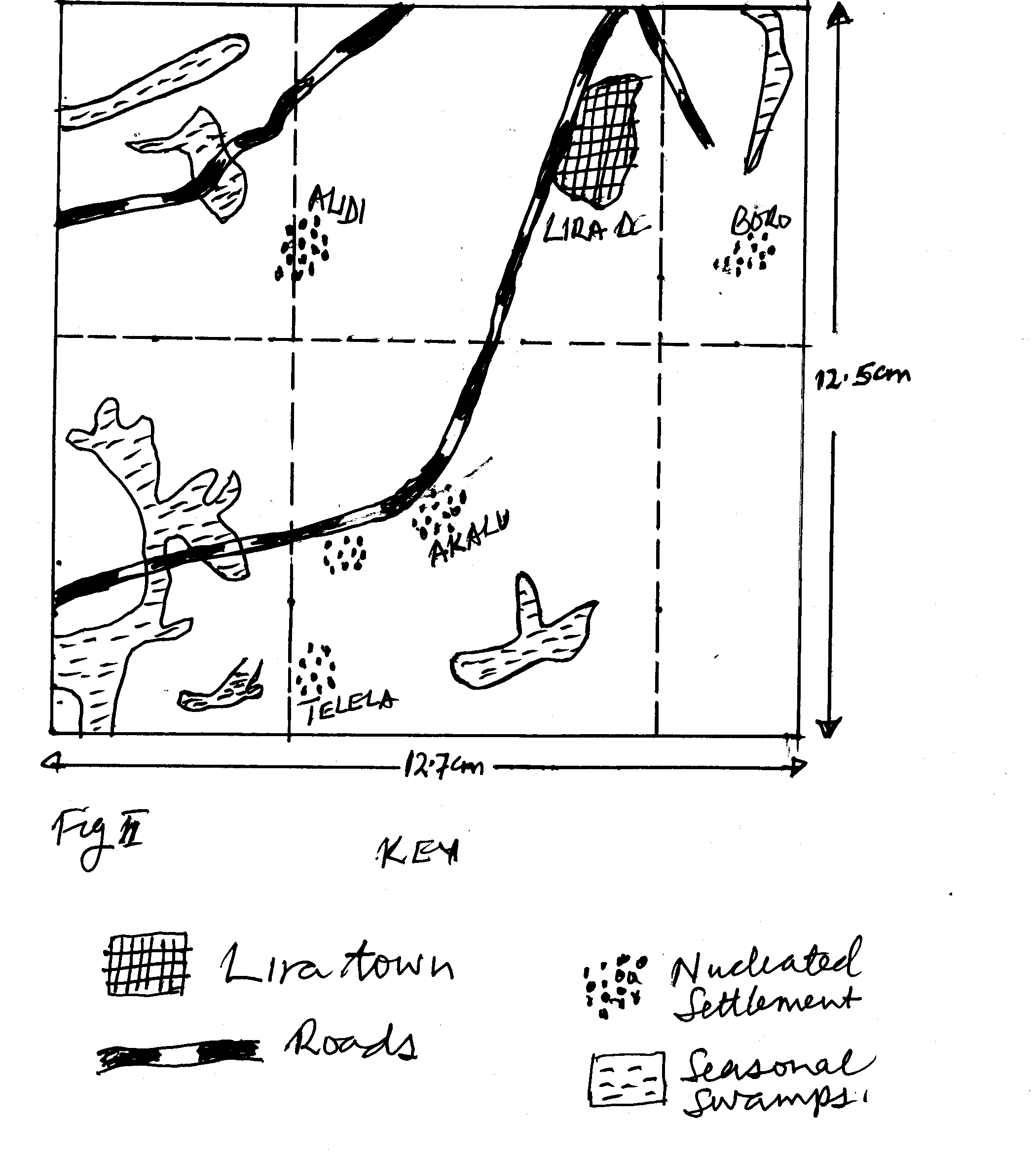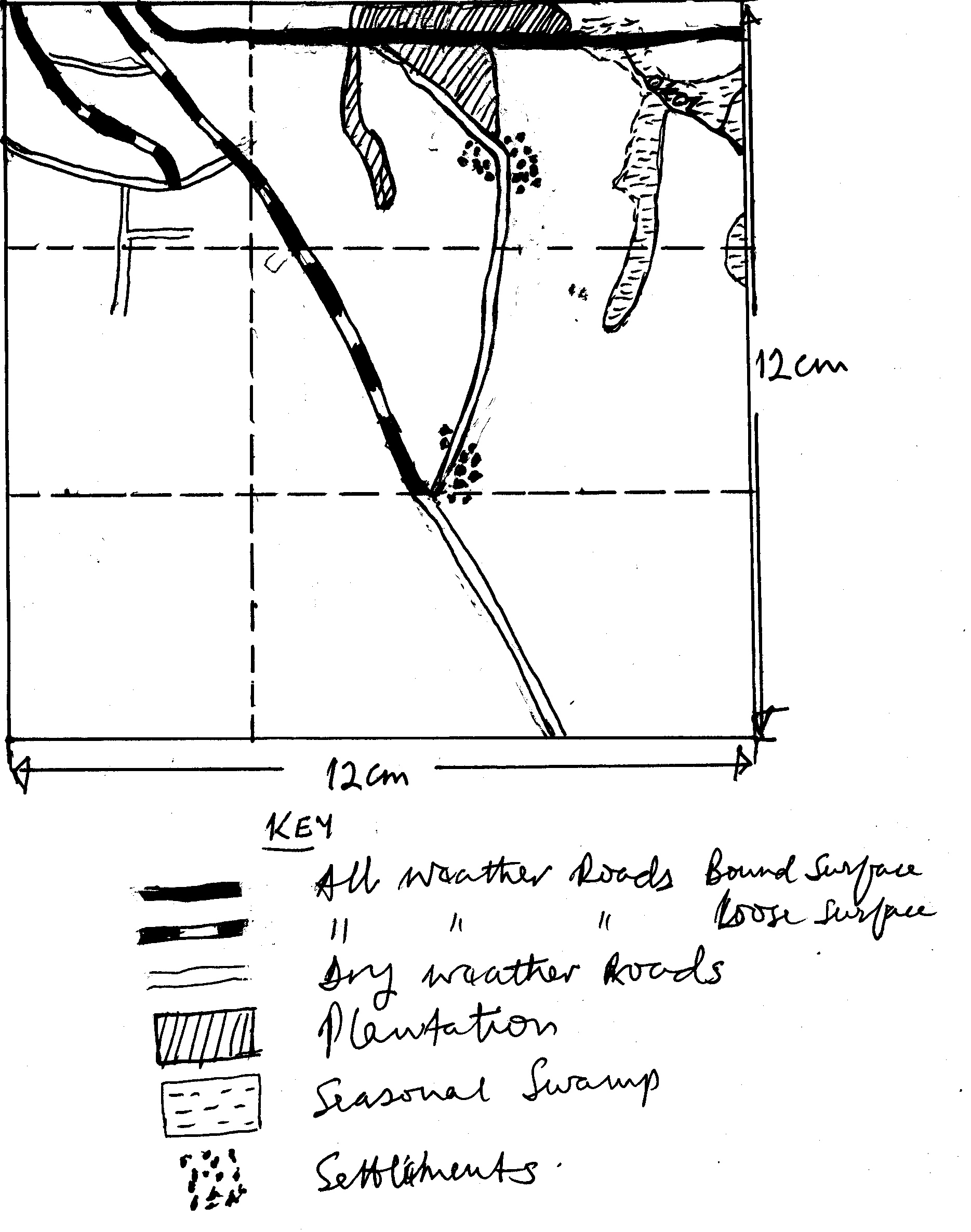Drawing Sketch Maps
In drawing a sketch map, it is not necessary for it to be accurate but try to keep the right proportions .The following steps can be followed :
- Measure the external dimensions of the map length and breadth.
- Reduce their length by a fixed amount and then draw the out line.
- Select the features to be shown, note where they cross the gridlines on the map and draw in the corresponding position on the sketch.
- To obtain a reasonably accurate location of features on a sketch map grid the area partially.
- Then put on your sketch map only features required by the question.
- Sketch maps do not have scales.
A complete sketch maps must have the following:
- Title which should bear the name of the map extract and include all items required by the question.
- Frame: This may contain major grid lines.
- Key /labeling to define all symbols on the sketch map.
- Compass direction. This shows the map orientation as for location and northward facing.
Sketch map of Lira showing seasonal swamps and human features.

.png)
MAP REDUCTION
When reducing the map, the following procedures should be followed
a) Measure the length and the width of the area given and divide it by the reduction factor e.g. for LIRA area.
- Length of Northings 38cm
- Length of Eastings 37.5cm.
b) If the reduction factor is 3, then the lengths of the reduced map would be = 12.7 cm
and 37.5. =12.5 cm
3
Determine the positions of major grid lines e.g. Eastings 80 and 90 and Northing 40 on LIRA map extract for instance.
The position of Northing 10 is 20
3 = 6.7cm.
Having designed the frame then, locate the positions of the features required on the sketch map as seen in the diagram below:
The reduced map of Lira by 3 showing seasonal swamps and human features


To determine the new scale of the reduced map is
(a) State the original scale i.e. 1: 50,000
(b)State the new scale by using the formula
Scale of the reduced map = original scale divided by reduction factor i.e
1÷3 = 1 x 1
50,000 50,000 3
= 1 = 1:150,000
150,000
MAP ENLARGEMENT
When enlarging a map, only a part of the map can be enlarged because the whole map if enlarged can not fit on the answers sheets used in the examinations
So to enlarge a map the following steps should be followed:
Mark out the portion of the map asked to be enlarged.
Measure the length and the width of the portion marked out of the map. i.e length of the marked portion = 5cm
Width of the marked portion = 4cm
If the enlargement factor is 2, then the length of the enlarged map would be 5x2= 10cm and the width 4x2= 8cm.
Determine the position of the major grid lines e.g Easting 90 and Northings 47 on LIRA map extract.
Position of Easting 90 is 2x2 =4cm
The position of Northings 46 and 47 are 2x2= 4cm for 46 and 4x2= 8cm for 47.
Having designed the frame, locate the positions of the features required as seen in the diagram below:
The enlarged map of Lira by 2 showing seasonal swamps and human features.


To determine the new scale of the enlarged map.
- state the original scale i.e 1:50,000
- state the new scale by using the formula.
- Scale of the enlarged map= original scale x enlargement factor i.e. 1
50,000 x 2 = 2
50,000
= 1
25,000
=1:25,000